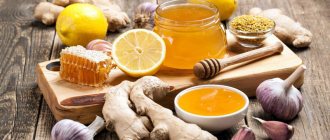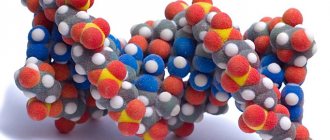Parmesan production technology
Parmesan is an Italian hard cheese characterized by long ripening. Its original name is Parmigiano-Reggiano. The first written mention of it dates back to 1254 in Genoa. Cheese production is carried out annually, from early April to mid-November. The main ingredient is milk from cows grazing on the pastures of the production area.
First, the vats are heated, and then renin is added to them. Under the influence of high temperature, a curd clot is formed from it. It is divided into small particles by sharp movements.
After special treatment, the curd is placed on hemp cloth, after which it is dipped in whey. After transferring into wooden molds, excess whey is removed from the resulting curd. The next step is to distribute the cheese mixture into molds. After 4 days of aging, they are lowered into a barrel with saline solution. This is necessary for canning the product. Throughout the year, the cheese matures in a special room. Every 10 days it must be turned over and wiped with a cloth. The maturity of the cheese is determined by tapping it with a silver hammer. On the finished product you can find a mark indicating the place of its manufacture:
- Padua;
- Parma;
- Reggio Emilia;
- Bologna;
- Modena.
There should be no holes in Parmesan cheese, which are typical for cheese.
Before entering the shelves, the cheese undergoes quality control. A special commission evaluates its texture, taste, size and smell. Only after this the corresponding stamp is placed on the head of cheese.
Comment! A head of Parmesan is 70% nutrient-rich and 30% water.
History of Parmigiano Reggiano
The birthplace of Parmesan is Italy. The history of everyone's favorite dairy product dates back almost 1000 years ago. It first appeared on the territory of the Cistercian and Benedictine monasteries. And, despite its great age, the product’s recipe has remained unchanged to this day: milk, water, salt and the patience required during the ripening of the cheese.
The monasteries where Parmesan first appeared were located on the plain between Reggiano and Parma, two Italian provinces. And it was in their honor that the Italian monks gave the name Parmigiano Reggiano cheese. There are a large number of pastures located near the monasteries, so there was no shortage of raw materials. This is what made it possible to conduct various kinds of experiments with the formulation of a product that could retain its properties, taste characteristics and structure for a long time.
Parmesan was first mentioned in a notarial document drawn up in Genoa at the beginning of the 12th century. According to him, one of the richest women in Italy mortgaged her property in order to use the proceeds to order an annual supply of 25 kg of cheese, which is made in Parma. In those years, Parmesan was called caseus parmensis. Throughout the 14th century, the Cistercians of the Benedictine Abbey were the only ones involved in the production of Parmesan, because they kept the recipe strictly secret. Their product was sold throughout Italy.
In the 16th century, the recipe for the product in question was sold to European cheese factories, where the best cheese makers in France and Germany began preparing it. And already in 1612, the Duke of Parma, in order to protect the original production, compiled a list of places where the use of the word Parma in the names of their own products is allowed.
So, in 2004, there were already more than five hundred producers of cheese called Parmesan across the planet. But already in 2008, during the consideration of the case, the European Court decided that Parmesan cheese can only be produced by those cheese factories that are located in the northern regions of Italy and are responsible for the quality of the product.
Reference! The process of making Parmesan in the Emilia-Romagna regions always starts on April 1st.
Chemical composition of Parmesan cheese
Parmesan is considered one of the most satisfying and healthy types of cheese. This is due to its rich composition. It contains 9 amino acids necessary for the body. In addition, the product is considered a rich source of proteins. 30 g contains 1/5 of its daily requirement. The chemical composition of Parmesan cheese includes the following components:
- pantothenic acid;
- vitamins B12, D3, PP and A;
- amino acids;
- biotin;
- micro- and macroelements (sodium, zinc, iron, manganese, selenium, phosphorus, potassium, copper and calcium);
- fatty acid.
The main feature of the cheese is its rich calcium content. Even when consumed in small quantities, it is able to replenish the daily requirement for the substance. Due to the fatty acids in its composition, parmesan strengthens blood vessels and starts metabolic processes. The abundance of vitamins stabilizes the emotional state and improves immunity.
What is Parmesan eaten with and where is it used?
In its homeland, Parmesan is the No. 1 cheese. And its use largely depends on the ripening period:
- One-year-old Parmesan is used as an appetizer for young wine. It is consumed together with fresh fruits, vegetables, and nuts.
- The two-year-old product already has a wider range of applications. It is placed in a salad with pasta, vegetables and fruits, it goes well with Mascarpone sauce, and navy pasta with Parmesan is the most popular dish in Italy.
- A more mature product, aged 2-3 years, goes well with aged red wine.
The variety in question, cut into slices and seasoned with a few spoons of balsamic vinegar, is a win-win option for banquets and just home parties.
What else is Parmesan used for? With its help it is possible to diversify any recipe. When grated, tomatoes, eggplants, peppers, onions, and zucchini are baked with it. Risotto and pizza are prepared on its basis. Portioned pieces served along with dry fruits, fresh vegetables and even jam give the latter an unforgettable and unique taste.
Advice! The cheese will release its aromas and taste better if it is allowed to stand for a while at room temperature before slicing. Remove the product from the refrigerator, but do not remove the packaging.
The main companion of Parmigiano-Reggiano is pasta. It’s not for nothing that the Italians say: Pasta without Parmigiano is like a woman without a nose! In Italian cuisine you can find various dishes using Parmesan.
For example, in some restaurants, when serving, the pasta is rolled directly into the cheese wheel, making a hole in it at the top and pre-heating it. This way the pasta is completely covered with an even layer of cheese.
Health Benefits of Parmesan Cheese
Experts often recommend introducing parmesan into the diet of people with anemia, diabetes, tuberculosis and cancer. The product is easily absorbed by the body and does not add extra pounds. Among the most pronounced properties of cheese are:
- stimulation of peristalsis;
- antibacterial effect;
- normalization of metabolic processes;
- nutrition of brain cells;
- restoration of the nervous system;
- stopping the development of pathogenic microorganisms;
- maintaining visual functions;
- strengthening the cardiovascular system and musculoskeletal system;
- restoration of intestinal flora;
- help in losing weight.
The presence of this type of cheese in the diet ensures that energy reserves are maintained at the required level. Due to its high nutritional value, even a small portion of cheese relieves hunger for a long time. A large number of amino acids in the composition have a positive effect on metabolic processes. At the same time, the substances contained in cheese regulate the functioning of the digestive system.
What are the benefits of Parmesan for women?
Among the beneficial properties of Parmesan for women are stress relief. This is especially true during the premenstrual period and during menopause. Nutritionists recommend using Parmesan as a snack for women trying to lose weight. Due to its high nutritional value, it relieves hunger for a long time, but does not lead to weight gain. The product also has a positive effect on the condition of hair, nails and skin.
Attention! Real Parmesan can be added to the diet of people with lactose intolerance.
Parmesan is considered one of the most expensive types of cheese
Parmesan during pregnancy
Parmesan is not a food prohibited during pregnancy. Due to the fact that it is easily digestible, the likelihood of digestive disorders is minimal. In addition, it contains a lot of minerals necessary for the development of a child.
Is Parmesan ok while breastfeeding?
This type of cheese can be introduced into the diet of a nursing woman from the 1st month of birth. It has the ability to increase the fat content of milk. This has a positive effect on the child's health.
Benefits of Parmesan for Men
Parmesan is also recommended to be included in the diet of men. It contains substances that have a positive effect on erection and the quality of seminal fluid. Due to its high protein content, the product increases physical endurance and accelerates the process of building muscle mass. To get the maximum benefit from it, it is enough to eat 50 g per day.
What are the benefits of cheese for children?
Parmesan can be given to children over the age of 3 years. The daily norm is 15 g. Cheese can be consumed in sandwiches or as an addition to omelettes, porridges and salads. It is advisable to pre-grind the product using a grater. Moderate consumption of parmesan in childhood helps maintain calcium levels in the body and regulate digestion.
The benefits of Parmesan cheese for weight loss
The benefits of cheese during weight loss are due to its ability to support metabolism. In addition, the product perfectly eliminates the feeling of hunger and replenishes energy for a long time. It is impossible to eat a large amount of cheese, so it does not contribute to excess weight gain. Due to its protein content, parmesan consumption prevents severe loss of muscle mass during weight loss. To speed up the weight loss process, consume cheese in the first half of the day in the amount of 2-3 slices.
Description of Parmesan
Parmesan is a hard cheese. During the first tasting, its taste seems strange, and it does not smell particularly attractive. The structure of Parmesan is dense and hard, so cutting it neatly into pieces will not work - it will simply break. Many people at this stage refuse to use it due to the fact that they simply do not understand how and where cheese can be used, apart from the usual powder.
But anyone who decides to get to know Parmesan better will certainly be able to appreciate its outstanding benefits, and it has many of them. High-quality, authentic Parmesan is very brittle and easy to break. Its structure is granular-scaly. Color – light yellow, iridescent with creamy shades. According to the original recipe, Parmesan is prepared from the milk of cows in the suburbs of Emilia-Romagna.
Reference! Genuine Parmesan can be easily identified by its place of production. If the place of manufacture is indicated on the packaging - Emilia-Romagna, then it is original. Any other product produced outside this region cannot be called Parmesan.
The cheese is produced in large, round heads with rounded sides. The weight of one cylinder can reach 40 kg, and the size in diameter can be up to 150 cm with a height of 25 cm.
Varieties
In production, there are 3 types of Parmesan, differing from each other in the duration of aging:
- Fresh. The ripening period for such products reaches 36 months.
- Old. The species matures from 36 to 48 months, and only after that it is sent for sale.
- Very old. This type of Parmesan has been on the shelves for 2 to 3, or even all 4 years.
Reference! The longer the cheese matures in storage, the more pronounced its grains and the higher its hardness.
But the ripening period of Parmesan is not limited to 4 years. Some species lie on shelves in storage for up to 10 years before hitting retail shelves.
Taste of Parmigiano
The flavor characteristics and weight of the cylinder can be predicted based on the age of the cheese. For example, the Very Old variety of Parmesan has a saltier flavor but weighs little.
Most experts note that the taste of the variety is complex and rich: it combines fruity notes with a pronounced nutty hue. In addition, the cheese is characterized by a spicy, long-lasting aftertaste and spice. The aroma is deep and spicy.
In addition, the taste qualities of the finished cheese also depend on the season of production: summer batches have a more interesting taste than those prepared in the fall, since in the summer cows have the opportunity to eat fresh herbs, while in the autumn the basis of their diet consists of 75% hay
Composition characteristics
100 grams of Parmesan contains:
- proteins – 36 g;
- fats – 26 g;
- carbohydrates – 3 g.
Parmesan is rich in all kinds of beneficial microelements. It contains the following vitamins and substances:
- vitamin A;
- B vitamins;
- vitamin D;
- vitamin E;
- vitamin K;
- vitamin PP;
- ascorbic acid;
- potassium;
- manganese;
- sulfur;
- sodium.
The product is also rich in zinc, selenium, copper, iron, calcium, magnesium.
Reference! Parmesan cheese is characterized as an extremely low cholesterol product. The energy value of the original cheese is 300-392 kcal per 100 grams. It all depends on the raw materials on the basis of which the cheese was prepared.
In addition, it also contains a trace element such as monosodium glutamate. Yes, many will say that its use negatively affects the functioning of the body. But it is worth understanding that in this case it is not a chemical compound, but a natural one, and, unlike chemistry, it is even beneficial to the body to some extent.
Moreover, Parmesan owes its unique taste to the monosodium glutamate present in it. As for the benefits of this substance, it stimulates the normalization of metabolic processes in the body and activates brain activity.
The fat content of the product is 25-32%, which, in comparison with other varieties, is quite a bit. And in terms of energy value, Parmesan is richer than many of its counterparts. Therefore, this cheese is often included in diets.
Benefits of Parmesan
The benefits of the dairy product in question are especially noticeable in relation to the child’s body and the elderly. This is due to the fact that the product in question contains a huge amount of essential amino acids, calcium, which is responsible for the condition of the skeletal system, phosphorus and other useful components.
Thanks to the high protein content, the hormonal system is balanced and cellular regeneration processes are stimulated. And vitamin A, present in Parmigiano, helps improve vision, skin and teeth.
Cheese is often included in the diet of those who are undergoing recovery from an illness or significant stress - a minimal amount of cholesterol and a whole storehouse of useful microelements make it an indispensable product at the stage of restoring the full functioning of the entire body.
Parmesan is also recommended for women during pregnancy and lactation - it helps restore the level of lost microelements and vitamins in the body. In addition, it has a positive effect on the gastrointestinal tract, helps normalize sleep quality and calm the nervous system.
Harm
As mentioned earlier, Parmesan cheese has a number of properties that have a positive effect on the human body. But like any other dairy product, it is contraindicated for consumption by people with individual hypersensitivity to lactose.
In addition, qualified specialists strongly do not recommend giving this variety to children who have a hereditary predisposition to diabetes. Parmigiano-Reggiano should be consumed with extreme caution by those who suffer from hypertension or have previously had a heart attack. This is due to the presence of sodium in the product, which is very dangerous for this category of people.
In the minimal risk group are people with a history of gastrointestinal diseases, obesity, and chronic migraines. Parmesan is also undesirable immediately after intoxication of the body, since it can provoke a relapse and deterioration of the person’s general condition.
Advice! The daily intake of Parmesan recommended by experts is 40 grams. In such quantities it certainly will not cause harm to the body.
How to store
The shelf life of Parmesan in the refrigerator is 2-3 months. In general, heads are stored for six months from the moment of their production without losing their characteristics. However, this shelf life is only relevant if the product is stored at a temperature not exceeding 8°C.
Many types of cheese can be stored in the freezer without compromising their taste and structure. Is it possible to freeze Parmesan? Most cheese makers store the product this way, since it tolerates freezing perfectly.
In addition, before storing cheese in the refrigerator or freezer, immediately after purchase it must be wrapped in parchment paper, then in foil.
When the product is purchased already grated or fragmented, the period of use of the cheese is reduced to 7 days.
How to make Parmesan at home
You can also make Parmesan yourself. It will be slightly different from the purchased version. In order for the product to turn out as desired, you must follow the cooking technique.
Components:
- 8 liters of milk;
- enzyme;
- lipase;
- calcium chloride;
- thermophilic culture.
Cooking process:
- The milk is heated in a water bath to a temperature of 30 °C.
- The remaining components are added to it, after which everything is thoroughly stirred.
- Remove the container from the heat, wrap it in a towel and leave for 45 minutes.
- After the specified time, the enzyme is added to the mixture. After half an hour, the mass should curl up.
- After hardening, the resulting clot is crushed into several small pieces. Then the container is put back on the fire and brought to a temperature of 38 °C. It is important to prevent the pieces of cheese from sticking together.
- The temperature is increased to 52 °C, stirring the cheese in the opposite direction.
- When the clots become more elastic, turn off the fire. They should gradually go down. After this, the whey is drained.
- The resulting mixture is squeezed out using gauze and placed under a press.
- The next day, the head of cheese is pulled out of the mold and dipped in a saline solution for a day.
- The ripening process takes 2 weeks. To do this, the cheese is stored in a room with a humidity of 75% and at a temperature not exceeding 15 °C.
The product can be stored at room temperature for no more than a week
Important! Due to its sufficient calcium content, parmesan can be used to prevent osteoporosis.
What wine goes with Parmesan cheese?
Parmesan, as a solid long-aging cheese, requires a strong and worthy companion. By default, it is believed that the older the cheese, the older the wine that is served with it should be, but it is important to remember that old wines that have been infused in barrels are not the best choice: the flavor of the wood will not have the best effect on your sensations.
Full-bodied, fruity red wines that have plenty of tannins go well with Parmesan, as well as white wines that are not too brightly rich. Beaujolais, Chinon, Bordeaux, Chianti, white Chablis, Tokay - try cheese with these wines and find out which combination suits your taste.
Use of Parmesan cheese in cooking
We recommend reading: The benefits of white wine and how to make it at home
Parmesan is especially common in traditional Italian cuisine. It is used to make pasta, salads, pizza and various soups. When baking main courses in the oven, cheese is used to form a golden brown crust. Parmesan is often used as an appetizer for red wine. It goes well with cold cuts, olives, tomatoes and herbs. The most successful gastronomic combinations include Parmesan with arugula, cherry tomatoes, eggplant and walnuts. Italian housewives add cheese crust to soups 5 minutes before readiness. This allows you to give the dish an unusual spicy taste. In addition, it is often used as an addition to lasagna. Before serving, Parmesan is chopped with a special knife. Due to the unusual grain structure, even slices are not obtained. Therefore, the product is not cut, but broken off into pieces.
Recommended reading: Benefits of tomatoes for the body
What to cook with Parmesan
The method of using Parmesan depends, among other things, on its age. Thus, young cheese is the most versatile, combines with other cheeses and is pleasant to eat as an independent snack with vegetables, fruits, berries or as part of a classic cheese plate. It is often added as an ingredient to meatloaves.
Parmesan goes well in both cold appetizers and hot dishes. For the second option, more mature cheese is often used. It is great for casseroles with meat and fish, for soups and real Italian pasta.
It is curious that the combination of Parmesan with chocolate is quite popular, when cheese is dipped into melted chocolate and allowed to cool, thus turning it into a dessert. If you want to find more interesting and varied recipes with Parmesan cheese, take a look at the corresponding section on the site. There you will surely find dishes that you and your loved ones will like.
Harm from Parmesan
When consumed in moderation, Parmesan is not harmful to health at all. Regardless, caution should be exercised with the product. It is high in sodium. In older people, the need for the substance is not high. Eating too much parmesan can lead to sodium overload, which can be detrimental to your health. It is also necessary to take into account the contraindications of Parmesan.
Among them are the following:
- enterocolitis;
- hypertension;
- allergy;
- pyelonephritis;
- stomach ulcer;
- excess weight;
- gastritis;
- urolithiasis disease;
- complicated toxicosis.
Allergies to dairy products are rare. To exclude possible allergic reactions, parmesan should be consumed in small quantities. Intolerance is indicated not only by skin rashes, but also by abnormal bowel movements. In rare cases, swelling of the mucous surfaces is observed.
If the cheese begins to deteriorate, the damaged areas are cut off and the rest is heat treated.
Taste and calorie content of Parmesan
“The King of Cheeses,” as this variety is called today all over the world, is very nutritious; the calorie content of Parmesan is 392 kcal per 100 grams of product (some sources mention up to 420 kcal). The good news is that these calories come from protein and fat, not carbohydrates. The bad news is that cheese should still be consumed in controlled quantities.
Despite the “harsh” appearance and hardness, the taste of Parmesan is quite soft, distinctly salty, especially if the cheese is young enough. Also in the taste you can note a slight sourness and even sweetness.
Cheese experts evaluate the taste qualities of aged specimens like expensive wine. The flavor shades of Parmesan include dried fruits, tropical fruits, boiled milk, melted butter, and nuts. To put it simply, over the years the cheese becomes more piquant and spicy, and the nutty and woody aroma can be felt quite clearly.
How to choose and store Parmesan cheese correctly
When choosing a product, you should pay attention to the presence of appropriate seals and inscriptions. The abbreviation DOP must be present on the packaging. The stencil marking “PARMIGIANO-REGGIANO” is also important. Next to it, in addition to the production date, there is a unique serial number. If the cheese has minor defects, there will be horizontal lines on the packaging.
It is advisable to avoid vacuum-packed cheese. It is necessary that it is cut from the large head immediately before purchase. It is extremely important to pay attention to how the product is stored on the counter. It is able to absorb foreign odors. Therefore, there should be no other products near it.
By taste you can determine the degree of maturity of the product. The young cheese has a delicate taste with notes of flowers and herbs. Product aged 22 months or more has a slight sweetness and a hint of piquancy. Specimens older than 30 months are spicy and pungent in taste.
In sealed vacuum packaging, cheese can be stored for up to 8 months. The most suitable place for storage would be the refrigerator. After opening, the product must be wrapped in parchment paper and then in foil. In this form, it is able to retain its benefits for six months. In its original packaging, cheese spoils very quickly. It may become moldy or absorb unpleasant odors. In order to dispose of a spoiled product in a timely manner, after replacing the packaging, it is necessary to record the date of opening.
Another way to store cheese involves wrapping it in a wet cloth. The top is covered with foil. In this form, the cheese is placed in a plastic container with a lid. You can also use the freezer for storage. But the temperature should be between - 20 and - 15 °C. Before placing in the freezer, the product is wrapped in parchment paper. It is believed that the best preservation in this way can be ensured only for small pieces of cheese.
Advice! It is not advisable to buy grated Parmesan, as it significantly loses its taste.
The price of Parmesan in Italy and Russia
“How much is a king worth?”, you ask. In Italy, the cost of Parmesan, depending on age, varies from 12 to 30 Euros per 1 kg. During fairs, cheese can be purchased at a lower price.
Unfortunately, due to the current political situation, it is not possible to buy Parmesan in Russia. But on the shelves of domestic stores you can find cheese of Russian, Latvian, Moldavian, Uruguayan production with the name Parmesan , a little close in its properties to the real thing; the cost of such a product varies from 1000 to 2000 rubles.
That's all about Parmigiano Reggiano! We tried to bring to you the most complete information about this king of cheese. I would like you to choose Italy when looking through places for your next vacation. Drop by to see the king, and he will remain in your heart forever. Relax in style!
↘️











